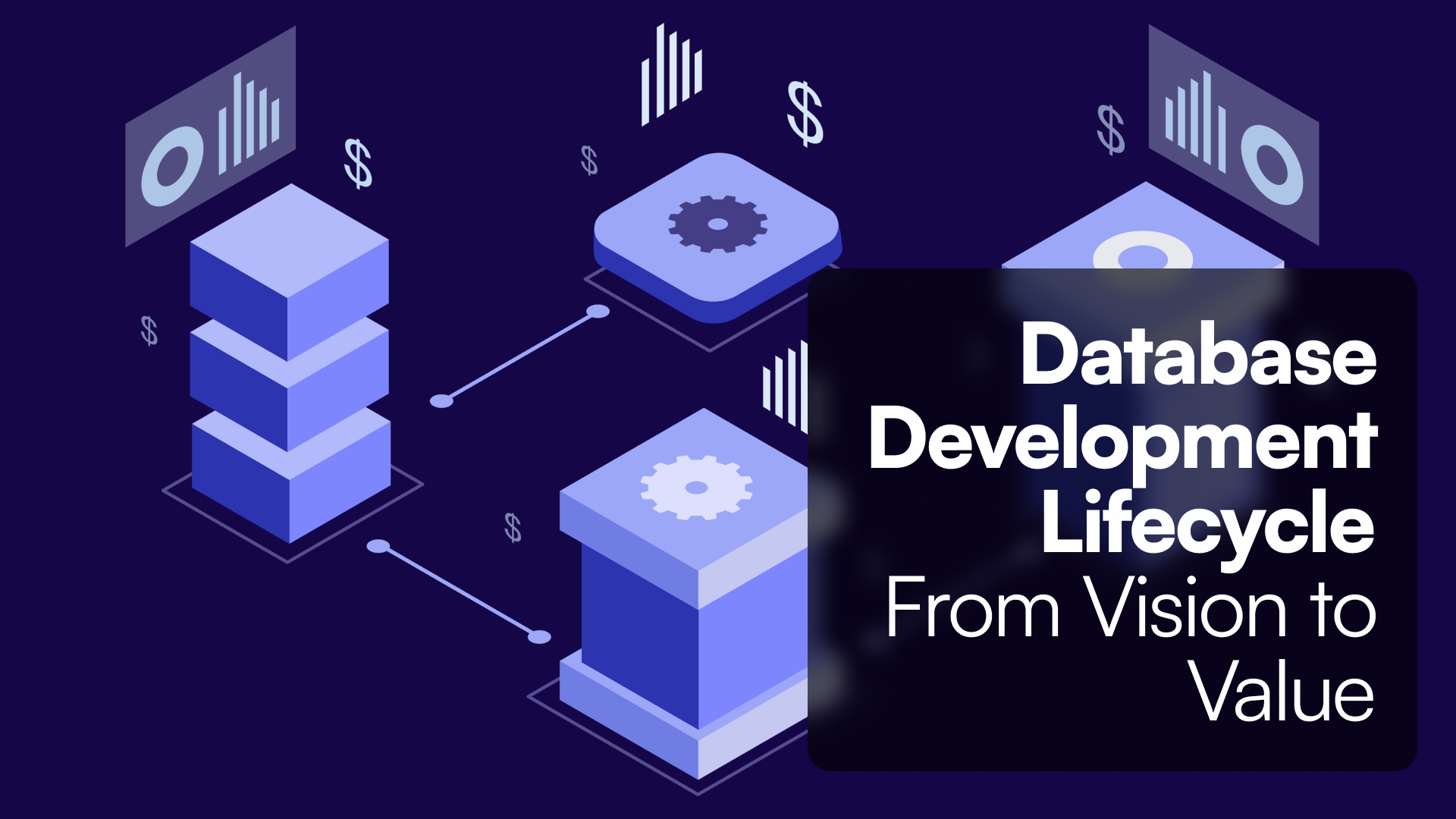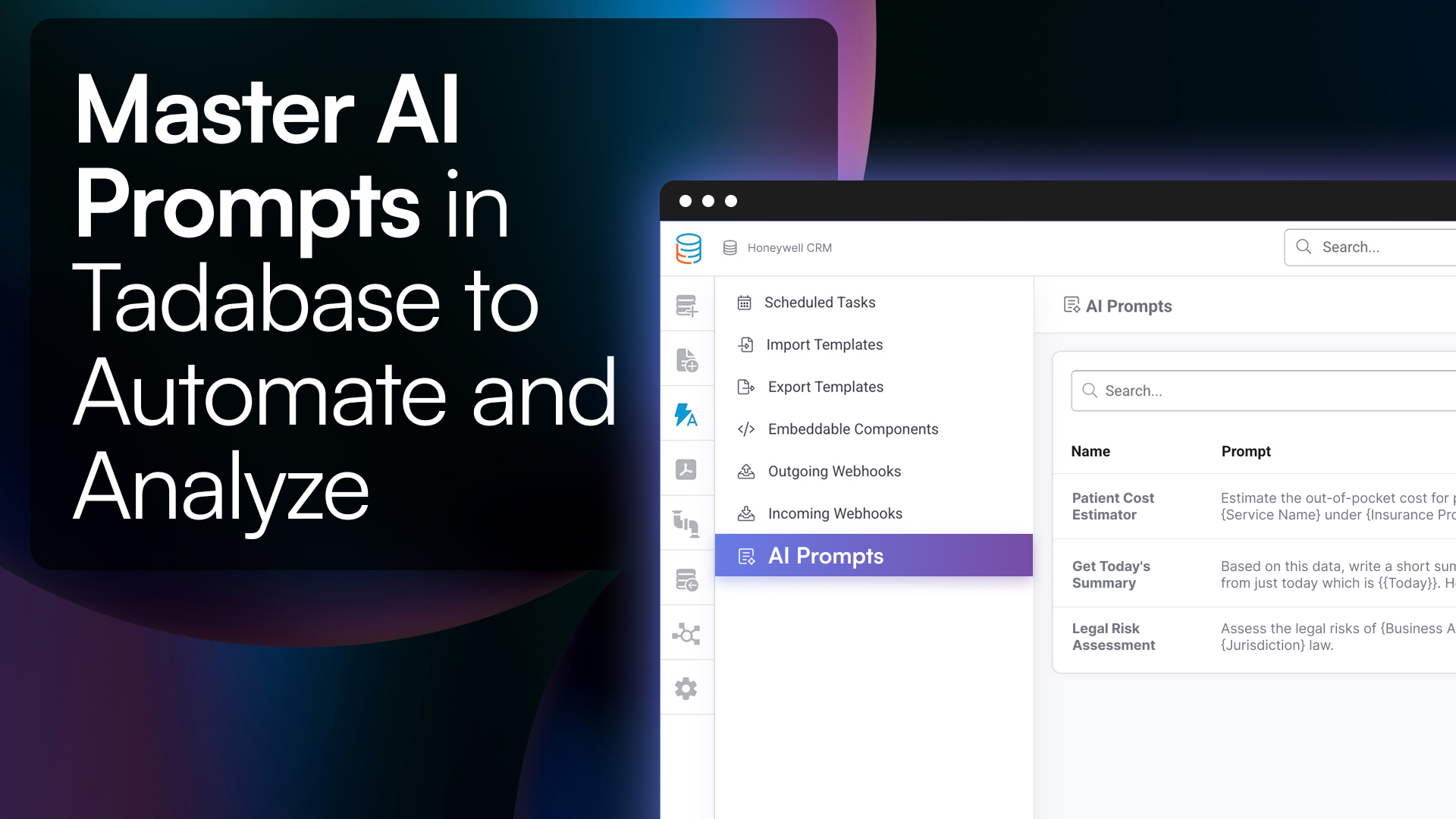Understanding the different types of databases is essential to managing your data effectively and making the right choice for your business.
Introduction
Databases are at the heart of everything we do in the digital world, from shopping online to sharing photos on social media. Whether you realize it or not, databases silently power these experiences, organizing and storing the data that drives our everyday interactions with technology. But what exactly is a database, and why is it so vital to modern businesses and applications?
In this guide, we'll explore the ins and outs of databases—what they are, how they work, and why they have become indispensable. From the early days of computing to today's sophisticated cloud-based systems, databases have undergone a remarkable transformation. Understanding this evolution provides valuable insight into how databases function today and what we can expect from them in the future.
What is a Database?
A database is much more than a simple collection of data. It’s a structured system designed to store, manage, and retrieve information efficiently. Whether it's handling customer records for an online store or powering complex algorithms behind AI-driven applications, databases are the foundation upon which digital systems operate.
In essence, databases provide the infrastructure that allows businesses and individuals to store vast amounts of information in a way that’s easy to access and manage. This ability to organize and process data makes databases a crucial part of nearly every industry, from e-commerce to finance to healthcare.
The Evolution of Databases
The journey of databases began in the early days of computing, when data was stored in flat files—simple text files without any structure or organization. As businesses and technology evolved, it became clear that there was a need for more efficient ways to manage and query data. This led to the development of the hierarchical database model, which introduced a tree-like structure to organize information.
The next major leap was the creation of relational databases in the 1970s by IBM’s Edgar F. Codd. Relational databases revolutionized data management by allowing data to be stored in tables and accessed through structured queries using SQL (Structured Query Language). This model became the foundation for many of the databases still in use today, such as MySQL, Oracle, and PostgreSQL.
As the internet era took off in the 2000s, the demands on databases grew exponentially. This led to the rise of NoSQL databases, which could handle the large volumes of unstructured data generated by social media, e-commerce, and big data applications. These databases offered flexibility, scalability, and performance, making them ideal for the needs of modern businesses.
Today, we see databases increasingly moving to the cloud, offering businesses the ability to scale and manage their data infrastructure remotely, with less need for in-house IT resources. You can learn more about these advancements in our post on Cloud Databases.
How Does a Database Work?
At a high level, databases organize data into structured formats such as tables (in relational databases) or collections (in NoSQL databases). Data is stored as individual records, and queries allow users or applications to retrieve or manipulate that data as needed. Database Management Systems (DBMS) manage the data, ensuring consistency, integrity, and security.
When a user or an application needs data, they interact with the DBMS using specialized query languages like SQL. The DBMS processes the request, retrieves the relevant data, and delivers it to the user or application. For those new to database technology, familiarizing yourself with key terms is essential. We cover these basics in our Essential Database Terms for Beginners.
Types of Databases
There are several types of databases that serve different needs:
1. Relational Databases (RDBMS)
These are the most common type of database. Relational databases organize data into tables, making them ideal for structured data that needs to be queried using SQL. They are widely used in enterprise systems and applications. Learn more in our Complete and Simple Guide to Relational Databases.
2. NoSQL Databases
NoSQL databases are designed for handling large amounts of unstructured or semi-structured data, often used in big data and real-time applications. They offer more flexibility than traditional relational databases and are ideal for handling large-scale, distributed data sets.
3. Cloud Databases
Cloud databases are databases that are hosted on cloud computing platforms. These databases provide scalability and flexibility, allowing businesses to manage data storage and access without needing physical infrastructure. They are becoming the go-to option for businesses looking to scale quickly and efficiently.
4. Graph Databases
Graph databases store data in nodes and edges, representing relationships between data points. They are especially useful for applications that involve complex relationships, like social networks or recommendation engines.
Why Are Databases So Important?
Databases are critical to the operation of nearly every digital application because they allow for:
- Data Organization: Structured storage and access to data, which allows businesses to effectively manage and analyze information.
- Efficiency: Databases speed up the process of retrieving and managing data, making applications faster and more responsive.
- Data Integrity: Databases ensure that data remains consistent and accurate through features like transaction processing and data validation.
- Scalability: Modern databases can handle massive amounts of data, making them indispensable to growing businesses in every sector.
To ensure your database is well-optimized for your specific needs, proper Database Design is essential.
The Future of Databases
The future of databases is being shaped by new technologies and demands. As more data is generated every second, from IoT devices to real-time financial transactions, the need for databases that can handle distributed and decentralized data is becoming more apparent. Distributed databases, which allow data to be stored across multiple locations, are becoming increasingly popular, enabling businesses to operate more flexibly and efficiently.
Another significant trend is edge computing, where data processing happens closer to the source of data generation rather than in a centralized cloud. This approach reduces latency and enhances performance for time-sensitive applications, such as autonomous vehicles and smart cities.
Machine learning and AI are also playing a larger role in database management. In the future, databases will become more intelligent, capable of optimizing their own performance, predicting potential issues, and even automating complex queries to help businesses gain faster insights from their data.
However, the future is also about preserving the past. Databases have a long history, and many of the core principles established decades ago, such as relational models and ACID properties (Atomicity, Consistency, Isolation, Durability), continue to be relevant in new database technologies. Understanding this evolution helps us appreciate the stable foundation upon which the databases of tomorrow are being built.
Common Use Cases for Databases
From managing customer data in e-commerce platforms to storing complex medical records in healthcare, databases have countless applications across industries. They enable businesses to operate efficiently and make informed decisions based on accurate, real-time data. Whether you're exploring Database Applications or looking to implement advanced systems, understanding the capabilities of different databases is key to choosing the right solution.
Conclusion
Databases are the invisible engine behind the digital experiences we rely on every day. Their evolution from simple flat files to sophisticated cloud-based systems reflects the growing complexity and scale of our data needs. Understanding databases isn’t just for tech experts—it’s for anyone who wants to harness the power of information to drive innovation and growth.
Whether you're managing a small app or overseeing an enterprise's data infrastructure, the right database can make all the difference. If you're ready to take control of your data, explore our guide on choosing the best database software to get started.
FAQs
What is a database?
A database is an organized collection of structured or unstructured data, stored electronically in a computer system. Managed by a Database Management System (DBMS), databases allow users to efficiently store, retrieve, update, and manage data. Databases are fundamental to applications such as websites, enterprise systems, and cloud services.
What are the different types of databases?
Databases come in various types, each suited to different types of data and use cases. The main types include:
- Relational Databases (RDBMS): Store data in structured tables with rows and columns. SQL is typically used to manage and query data. Examples: MySQL, Oracle, PostgreSQL.
- NoSQL Databases: Handle unstructured or semi-structured data. NoSQL databases are highly scalable and ideal for big data and real-time applications. Examples: MongoDB, Cassandra, Couchbase.
- Cloud Databases: Hosted on cloud platforms, offering flexibility, scalability, and managed services. Examples: AWS RDS, Azure SQL Database, Google Cloud Firestore.
- Graph Databases: Use nodes and edges to represent and store relationships between data points, often used in social networks or recommendation engines. Examples: Neo4j, Amazon Neptune.
- Hierarchical Databases: Data is structured in a tree-like format with parent-child relationships. This type is mostly used in legacy systems and certain applications like file systems.
What is a relational database?
A relational database is a type of database that organizes data into tables, with each table consisting of rows and columns. Each row represents a record, and each column represents an attribute of the record. The relational model uses SQL (Structured Query Language) to query and manipulate data. Relational databases are ideal for structured data where relationships between data points need to be maintained. You can learn more in our Complete Guide to Relational Databases.
What is SQL, and why is it important in databases?
SQL (Structured Query Language) is the standard language used to interact with relational databases. It allows users to query, insert, update, and delete data within a database. SQL is essential because it provides a consistent and efficient way to manage structured data in relational databases, and it is used in almost every RDBMS, including MySQL, PostgreSQL, and Microsoft SQL Server.
What are the advantages of NoSQL databases over relational databases?
NoSQL databases provide several advantages over relational databases, particularly in handling large volumes of unstructured or semi-structured data:
- Scalability: NoSQL databases can scale horizontally, making them ideal for big data and distributed systems.
- Flexibility: Unlike relational databases, NoSQL databases do not require a predefined schema, allowing for more dynamic data storage.
- Performance: NoSQL databases often provide faster performance for real-time web applications where rapid data storage and retrieval are essential.
- Variety of Models: NoSQL databases support a variety of models, including document, key-value, graph, and column-family, each optimized for different types of data.
What is a cloud database?
A cloud database is a database that runs on cloud computing platforms such as AWS, Microsoft Azure, or Google Cloud. Cloud databases offer flexibility, scalability, and managed services, meaning businesses do not need to maintain physical hardware or perform manual database maintenance. Cloud databases are ideal for businesses seeking to scale quickly without the overhead of managing their own infrastructure. Learn more about cloud databases in our Cloud Database Guide.
What is database normalization?
Database normalization is the process of structuring a relational database to minimize redundancy and improve data integrity. It involves organizing data into related tables and defining relationships between them. Normalization typically follows a series of steps known as normal forms, which progressively refine the database structure. The result is a more efficient and consistent database where data redundancy is reduced, and anomalies are minimized during data updates.
How do databases impact business operations?
Databases are critical to the operation of modern businesses, as they provide a way to store, manage, and retrieve data efficiently. The key impacts of databases on business operations include:
- Improved Decision-Making: Databases allow businesses to collect and analyze data, providing insights that help inform business decisions.
- Operational Efficiency: Well-organized databases speed up access to important information, making business processes more efficient.
- Data Integrity: Databases enforce data accuracy and consistency, which is crucial for maintaining the reliability of information in business operations.
- Scalability: As businesses grow, modern databases can scale to accommodate larger volumes of data without degrading performance.
What are the best practices for database design?
Best practices for database design include:
- Define clear objectives: Understand the goals of the database and how it will be used.
- Normalize the database: Organize data into tables to reduce redundancy and improve consistency.
- Choose the right data types: Ensure that each column in your tables uses the appropriate data type for its content.
- Plan for growth: Design the database with scalability in mind, so it can handle increased data volume over time.
- Indexing: Implement indexing strategies to optimize the speed of data retrieval, especially in large databases. You can read more about Database Design Best Practices in our in-depth guide.
What is a Database Management System (DBMS)?
A Database Management System (DBMS) is software that interacts with users, applications, and the database itself to capture and analyze data. A DBMS ensures that data is consistently organized and remains easily accessible. It manages data, the database engine, and the database schema, ensuring data integrity, security, and performance. Popular DBMS examples include MySQL, Oracle, SQL Server, and MongoDB. For a detailed explanation, refer to our article on Database Management Systems.
What is a database application?
A database application is a software program that interacts with a database to capture, manage, and retrieve data. These applications allow users to input data, run queries, and generate reports based on the data stored in the database. Examples of database applications include customer relationship management (CRM) systems, inventory management systems, and content management systems (CMS). Learn more in our guide on Database Applications.
How has the role of databases evolved over time?
Databases have evolved significantly from their early days of hierarchical and flat-file systems. Initially, databases were simple file storage systems, which lacked structure and were difficult to query. The invention of relational databases in the 1970s introduced structured tables and SQL, revolutionizing how data was stored and accessed. In recent decades, the rise of NoSQL databases has provided alternatives for handling unstructured data and the massive data sets generated by modern web and mobile applications. Today, databases are more flexible, scalable, and intelligent, with cloud-based systems and AI-driven insights shaping the future of data management.








